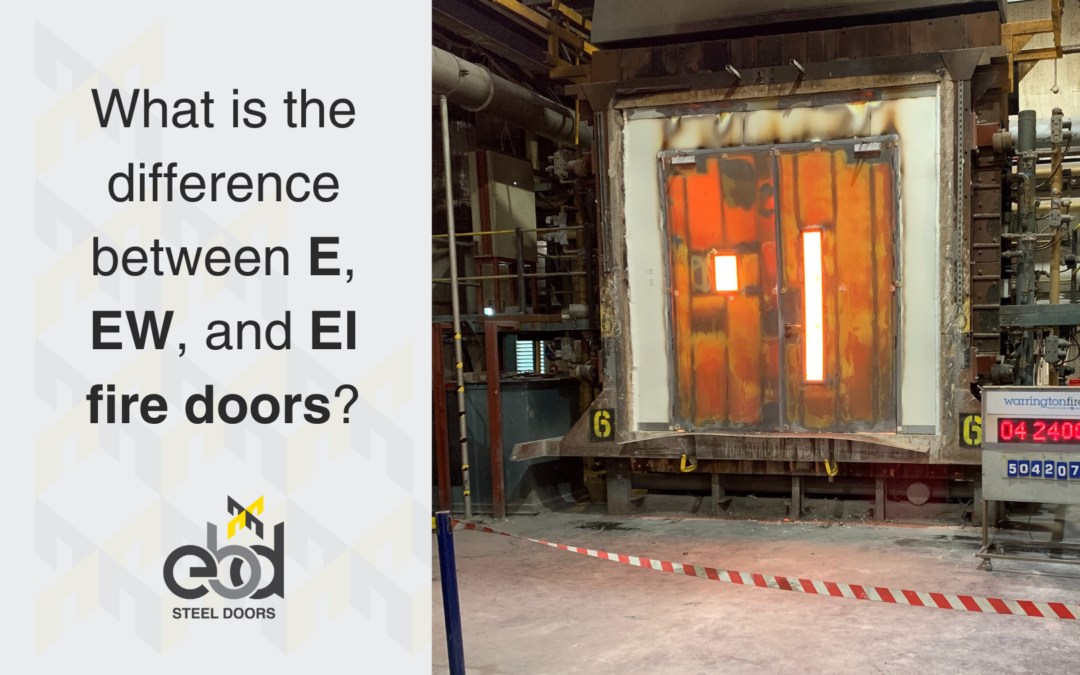Fire doors play a vital role in protecting lives and property, but not all fire doors offer the same level of performance. Whether you’re an architect, specifier, or contractor, understanding the classifications of E, EW, and EI fire doors under EN 13501-2 is essential for making informed decisions in fire safety design.
The numbers following the classification indicate the duration (in minutes) that the door maintains its performance in a fire test.
What is the difference between E, EW, and EI fire doors?
Fire door classifications are based on their ability to resist fire and heat transfer. The three main ratings—E (Integrity), EW (Integrity & Radiation Control), and EI (Integrity & Insulation)—each provide different levels of protection in a fire scenario.
E – Integrity
An E-rated fire door is designed to stop flames and hot gases from passing through for a specified period. However, it does not prevent the transfer of heat, meaning nearby materials on the unexposed side could still ignite due to high temperatures. While these doors play a crucial role in compartmentation and preventing the direct spread of fire, they offer limited protection against radiant heat.
For example, the EBD 44 Fire E provides fire performance up to E240, meaning that it can withstand fire exposure for 240 minutes before allowing flames to pass through.
EW – Integrity & Radiation Control
The term “EW” followed by a number indicates the duration (in minutes) during which the door limits the radiant heat transfer to below 15 kW/m2 at a measured distance from the door. An EW-rated fire door offers the same integrity performance as an E-rated door but with additional control over the amount of heat radiating through the door measured. This helps reduce the risk of secondary ignition on the unexposed side, making it a better option for protecting escape routes where people might be at risk from heat exposure. However, it does not fully insulate against heat transfer.
EI – Integrity & Insulation
An EI-rated fire door provides the highest level of protection. In addition to preventing the passage of flames and gases, it also insulates against heat transfer. This ensures that the temperature on the unexposed side remains low enough to prevent ignition of materials and allows for safer evacuation routes. EI doors are essential in high-risk environments such as hospitals, data centres, high-rise buildings, and transport hubs, where maintaining safe escape routes is critical.
Fire and Smoke Control
The EBD 65 EI is an EI60-rated fire door with S200 smoke classification. This means it provides 60 minutes of integrity and insulation and has the highest rating for smoke leakage control, ensuring maximum protection for critical environments.
Choosing the right fire door for your project
Choosing the correct fire door classification is crucial for meeting safety regulations and ensuring the protection of occupants. Different projects have different needs, and selecting the right level of performance can make a significant difference in real fire scenarios.
At EBD Steel Doors, we provide fully tested and certified E, EW, and EI fire doors, ensuring compliance with the latest fire safety standards. If you’re unsure which fire door is right for your project, our team is here to help.



